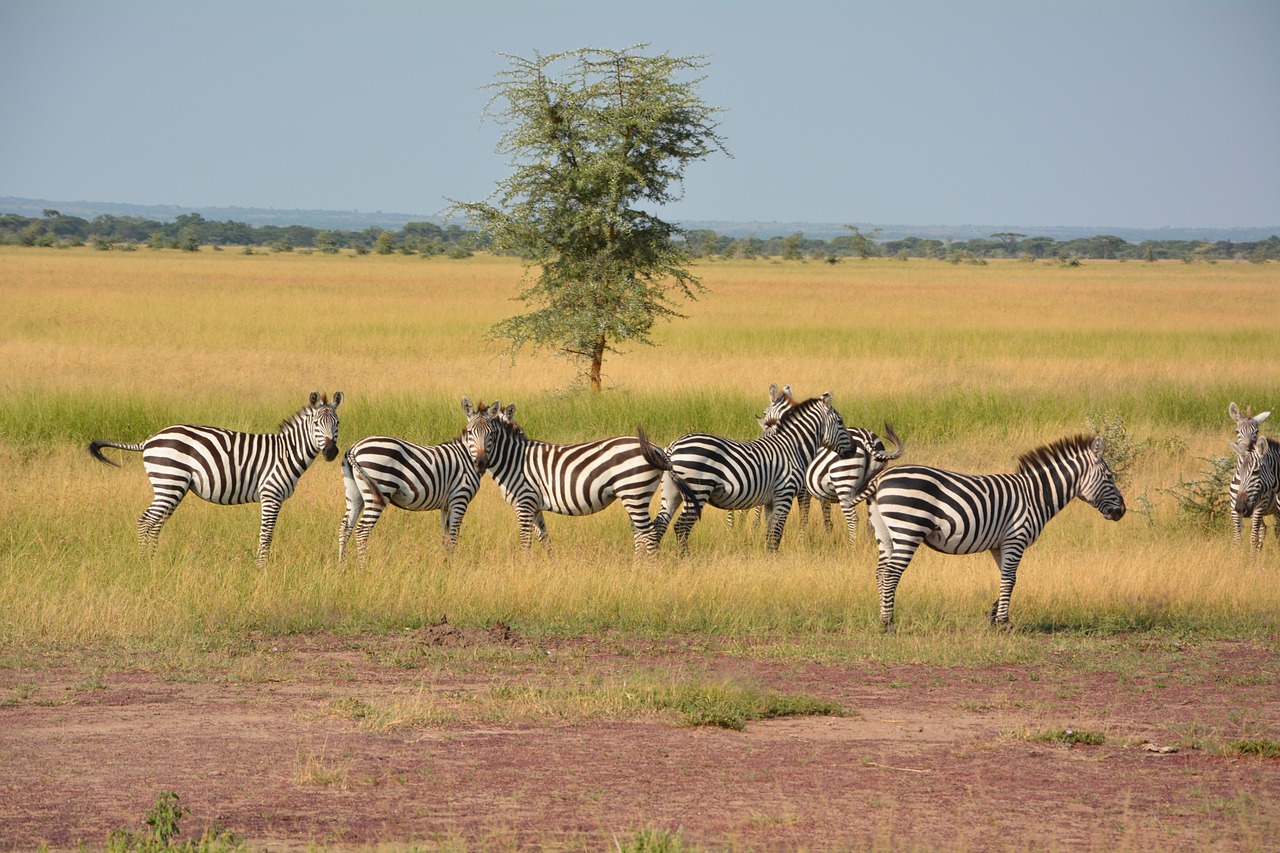Serengeti National Park
Serengeti National Park: The Heart of African Wildlife
Serengeti National Park, located in northern Tanzania, is one of the most famous wildlife reserves in the world and a UNESCO World Heritage Site. Spanning approximately 14,750 square kilometers, Serengeti National park is renowned for its stunning landscapes, diverse ecosystems, and extraordinary wildlife populations. Established in 1951, Serengeti National Park is home to the iconic Great Migration, where millions of wildebeest, zebras, and other herbivores traverse the plains in search of fresh grazing grounds, making it a must-visit destination for nature lovers and safari enthusiasts.
The Great Migration: Nature’s Spectacle
The highlight of Serengeti National Park is undoubtedly the Great Migration, often referred to as one of the natural wonders of the world. Every year, over 1.5 million wildebeest and hundreds of thousands of zebras embark on a perilous journey across the park and into the neighboring Maasai Mara National Reserve in search of greener pastures. This epic migration typically occurs between December and July, with the peak of the action taking place in June and July when herds cross the Mara River.
Witnessing this incredible spectacle is a bucket-list experience for many travelers. The drama of the migration, including river crossings and predator-prey interactions, captivates visitors and provides unparalleled opportunities for wildlife photography.
A Diverse Ecosystem
Beyond the Great Migration, Serengeti National Park boasts a rich tapestry of ecosystems, from vast open plains to dense woodlands and riverine forests. This diversity allows for a wide variety of wildlife to thrive within the park.
- Wildlife: Visitors can expect to see an impressive array of animals, including the “Big Five”: lions, leopards, elephants, buffaloes, and rhinos. The park is also home to cheetahs, giraffes, hippos, and various species of antelopes, all coexisting in this thriving ecosystem.
- Birdlife: Birdwatchers will delight in the park’s avian diversity, with over 500 species recorded. From the majestic secretary bird to the vibrant lilac-breasted roller, the Serengeti is a birding paradise.
Stunning Landscapes
Serengeti National Park is known for its breathtaking landscapes, which vary dramatically across the park. The iconic savannahs, dotted with acacia trees, create a classic African backdrop, while the Ngorongoro Crater and the Serengeti’s hilly regions offer stunning panoramic views.
The park’s landscapes are particularly striking during the wet season, from November to May, when the plains are lush and green. The seasonal changes not only enhance the beauty of the park but also influence wildlife behavior, making each visit unique.
Cultural Encounters with the Maasai
The Maasai people, renowned for their rich cultural heritage, inhabit the areas surrounding Serengeti National Park. Visitors have the opportunity to engage with the Maasai through cultural visits, gaining insights into their traditional customs, practices, and lifestyles.
These interactions promote responsible tourism and support local communities, ensuring that the benefits of wildlife tourism are shared. Visiting a Maasai village offers a deeper understanding of the relationship between the people and the land, as well as their efforts to coexist with the wildlife that surrounds them.
Accessibility and Visitor Experience
Serengeti is accessible from various entry points, with the nearest major city being Arusha. The park offers a range of accommodation options, from luxury lodges to budget-friendly campsites, ensuring that visitors can find suitable lodging to fit their needs and preferences.
Safari options abound, including guided game drives, hot air balloon safaris, and walking safaris, allowing visitors to immerse themselves in the park’s incredible wildlife. Experienced guides provide valuable insights into the ecosystems and behaviors of the animals, enhancing the overall experience.
Best Time to Visit Serengeti National Park Tanzania
The best time to visit Serengeti National Park largely depends on the wildlife experiences you seek. The dry season, from June to October, is ideal for game viewing, as animals gather around water sources and vegetation is less dense. This period also coincides with the Great Migration’s river crossings, offering thrilling wildlife encounters.
The wet season, from November to May, brings lush green landscapes and is a great time for birdwatching, as many migratory species arrive. While some areas may become muddy, this season is also known for spectacular calving seasons when wildebeest give birth to their young.
Conservation and Sustainability
Serengeti National Park is a critical component of Tanzania’s conservation efforts, playing a vital role in protecting its diverse wildlife and ecosystems. The park is managed with a focus on sustainable tourism practices, ensuring that the natural environment is preserved for future generations.
Entrance fees contribute to conservation initiatives and community development projects, supporting both wildlife protection and local livelihoods. Tourists are encouraged to engage in responsible tourism practices, promoting the sustainability of this remarkable destination.
Conclusion
Serengeti National Park is a world-renowned wildlife haven that offers an unforgettable safari experience. From the awe-inspiring Great Migration to the stunning landscapes and rich biodiversity, the park is a testament to Africa’s natural beauty. As a vital part of Tanzania’s heritage, Serengeti National Park invites travelers to explore its wonders while supporting conservation efforts that protect this extraordinary environment. Whether you’re on a thrilling game drive, witnessing the migration, or engaging with local cultures, a visit to Serengeti National Park promises adventure and lasting memories.




Comments are closed